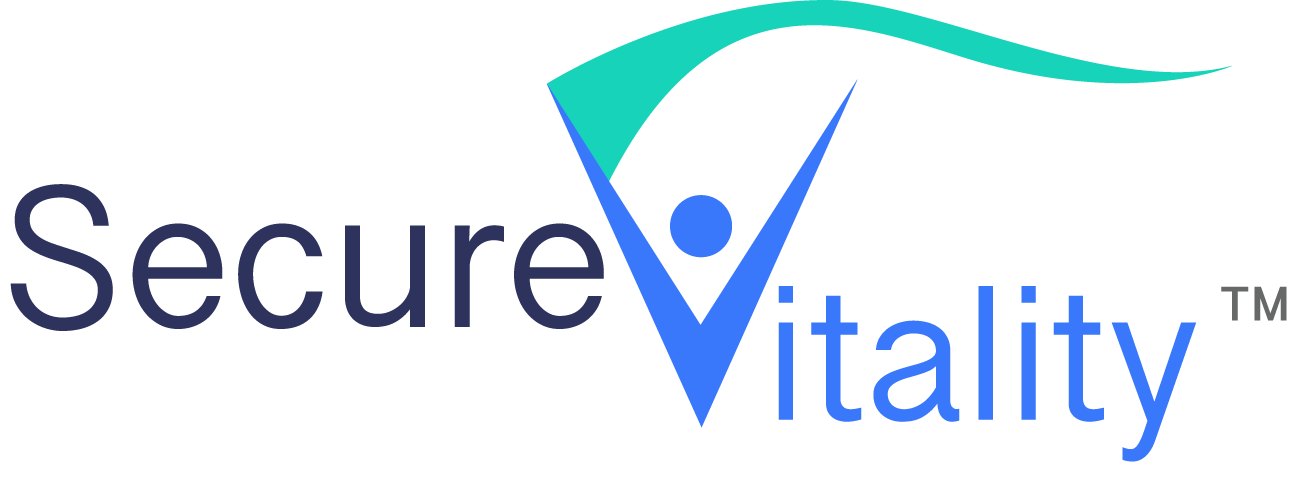Managed IT Services and Support
Managed IT Services Provider
In these uncertain times, place your technology in the hands of experts. Allow SecureVitality to provide secure, scalable, and proactive solutions to manage your stable infrastructure. We leverage our years of experience, expertise, and tools to provide you with the confidence for your business to thrive.

Comprehensive Technology Solutions from a Managed Service Provider
Managed Services and Solutions

Benefits
Benefits of Managed IT Services for your Business
FAQ
Frequently Asked Questions
What is meant by managed IT services?
What are the types of managed IT services?
There are many different types of managed IT services that a provider can offer. Some common examples include:
- Network management: This can include monitoring and maintaining a company’s network infrastructure, as well as implementing security measures to protect against cyber threats.
- Data backup and disaster recovery: Managed IT services providers can help companies create and maintain backup systems to protect against data loss, and also assist with disaster recovery in the event of a major outage or security breach.
- Technical support: Managed IT services providers can offer remote or on-site technical support to help employees with any IT-related issues they may encounter.
- Cloud services: Many managed IT services providers offer cloud-based solutions that can help companies move their data and applications to the cloud, allowing for greater flexibility and scalability.
- Cybersecurity: Managed IT services providers can help companies implement security measures to protect against cyber threats,
What are examples of managed services?
Managed IT services are a type of service offered by a third-party company that provides various IT-related services to businesses. These services can include managing and maintaining network infrastructure, providing technical support to employees, and implementing cybersecurity measures, among others. Some examples of managed IT services include:
- Network management: This involves monitoring, maintaining, and troubleshooting an organization’s network infrastructure to ensure that it is functioning properly and efficiently.
- Security management: This involves implementing and managing security measures to protect an organization’s data and systems from cyber threats. This can include things like firewalls, antivirus software, and intrusion detection systems.
- Help desk support: This involves providing technical support to employees who need assistance with their computers, software, or other technology. This can include things like troubleshooting technical issues, answering questions, and providing training on new technologies.
- Cloud services: This involves hosting an organization’s data and applications in the cloud, which allows employees to access them from any device with an internet connection. This can help organizations save money on hardware and IT infrastructure and improve their employees’ productivity.
- Data backup and disaster recovery: This involves regularly backing up an organization’s data and implementing disaster recovery plans to ensure that the organization can continue to operate in the event of a data loss or disaster.
Are managed IT services worth IT?
In general, managed IT services can be worth it for businesses because they can provide a number of benefits. These can include:
- Reduced IT costs
- Improved network uptime
- Improve performance
- Access to a team of experienced IT professionals.
Additionally, managed IT services can help businesses stay up-to-date with the latest technology and ensure that their IT systems are secure. Overall, the specific value of managed IT services will depend on the specific needs and goals of the business.
What is the purpose of managing IT services?
The purpose of managing IT services is to ensure that they are delivered effectively and efficiently. This involves coordinating and organizing the various activities required to design, develop, deliver, and support IT services, as well as monitoring their performance to ensure that they meet the needs of the business and its customers. Effective IT service management can help organizations to reduce costs, improve efficiency, and increase customer satisfaction.
What is included in managed IT?
What are the five main types of management information systems are?
- Transaction processing systems: These systems capture and process data from business transactions, such as sales, purchases, and payments.
- Management reporting systems: These systems collect, store, and provide access to data for the purpose of generating reports and analyses that help managers make decisions.
- Decision support systems: These systems use data and analytical tools to help managers make better decisions.
- Executive information systems: These systems provide high-level executives with easy access to the information they need to make strategic decisions.
- Knowledge management systems: These systems help organizations capture, store, and share knowledge and information among employees.
What are the four types of IT systems?
The four main types of information technology (IT) systems are:
- Transaction Processing Systems (TPS) – These systems support the processing of business transactions, such as sales, purchases, and payments. They are often used in retail, finance, and manufacturing environments.
- Management Information Systems (MIS) – These systems provide managers with the information they need to make strategic decisions. They often include tools for data mining, forecasting, and reporting.
- Decision Support Systems (DSS) – These systems help users make complex decisions by providing access to relevant data, models, and analytical tools. They are often used in fields such as finance, marketing, and operations.
- Executive Information Systems (EIS) – These systems provide executives with high-level, real-time information about the performance of the organization. They often include dashboard tools and other visual aids to help executives quickly understand key performance indicators.
These four types of IT systems are not mutually exclusive, and many organizations use a combination of these systems to support their operations.
What are the most common managed services?
Managed services refer to a range of services that businesses can outsource to a third-party provider. Some of the most common managed services include IT support, cloud computing, data backup and recovery, security, and communications. These services allow businesses to focus on their core operations and leave the management of certain functions to experienced and specialized service providers.
What is the difference between SaaS and managed service?
SaaS and managed service are both types of service delivery models that are offered by companies to customers. SaaS stands for “Software as a Service” and refers to a software delivery model in which a software application is hosted by a third-party service provider and made available to customers over the internet. In other words, with SaaS, the customer does not need to install and maintain the software on their own computers, but instead accesses it through the internet.
Managed service, on the other hand, refers to a service delivery model in which a company provides a specific service, such as IT support or security, to a customer and takes responsibility for managing and maintaining that service. In this model, the customer outsources the management of a specific service to the managed service provider, who then takes on the responsibility for ensuring that the service is delivered effectively and efficiently.
In summary, the main difference between SaaS and managed service is that SaaS is a software delivery model, while managed service is a service delivery model. SaaS involves the delivery of a software application over the internet, while
managed service involves the outsourcing of the management of a specific service to a provider.
Is Azure a managed service?
Yes, Azure is a cloud computing platform and a managed service provided by Microsoft. It offers a range of cloud services, including those for computing, analytics, storage, and networking. Users can choose and configure these services to meet their specific needs. With Azure, users can build, deploy, and manage applications and services on a global network using their preferred tools and frameworks.
What is the difference between cloud and managed services?
Cloud services are services that are delivered over the internet and provide users with access to computing resources on demand. Managed services, on the other hand, are services that are provided by a third-party provider to manage and maintain certain IT functions for the user.
The key difference between the two is that managed services are typically more comprehensive and include additional features such as monitoring, support, and maintenance, whereas cloud services are typically more focused on providing users with access to computing resources. Managed services are often used to outsource IT functions and allow organizations to focus on their core competencies, while cloud services provide a scalable and flexible way to access and use computing resources.
What is the difference between IT services and IT consulting?
- IT services and IT consulting are two different types of services that involve the use of technology to help businesses and organizations achieve their goals.
- IT services are focused on the practical, day-to-day use of technology to support the operations of a business. This can include things like managing a company’s computer network, providing technical support to employees, and maintaining and updating software and hardware.
- IT consulting, on the other hand, is focused on providing expert advice and guidance to businesses on how they can use technology to improve their operations and achieve their goals. This can include things like helping a company develop a technology strategy, identifying areas where technology can be used to increase efficiency, and providing guidance on the selection and implementation of new technology solutions.
In general, IT services are focused on the practical, hands-on use of technology to support the operations of a business, while IT consulting is focused on providing expert advice and guidance on how to use technology effectively.
What are the four P's of IT service management?
The four P’s of IT service management are people, process, product, and partner. These four elements are the key components of any successful IT service management strategy.
- People refer to the individuals who are responsible for delivering and supporting IT services.
- Process refers to the policies and procedures that are in place to ensure that IT services are delivered efficiently and effectively.
- Product refers to the technology and tools that are used to deliver IT services, such as software, hardware, and networking equipment.
- Partner refers to the external organizations and individuals that an IT department works with to deliver IT services, such as vendors, service providers, and consultants.
What is the difference between ITIL and ITSM including MOF?
ITIL (Information Technology Infrastructure Library) and ITSM (Information Technology Service Management) are two frameworks that are often used to manage and improve the quality of IT services. ITIL is focused on providing best practices for IT service management, while ITSM is a broader term that encompasses the practices, processes, and tools used to manage and deliver IT services to an organization.
MOF (Microsoft Operations Framework) is a framework for IT service management that was developed by Microsoft. It provides a set of best practices and guidance for managing and delivering IT services, and is based on the ITIL framework.
In summary, ITIL and MOF are specific frameworks for IT service management, while ITSM is a broader term that encompasses these frameworks and other approaches to managing and delivering IT services.
What are the benefits of managed IT services?
- Increased efficiency and productivity: Managed IT services can help your business run more efficiently and effectively by providing expert support and assistance. This can free up your own staff to focus on other tasks, improving productivity and helping your business to grow.
- Reduced IT costs: By outsourcing your IT support to a managed service provider, you can save money on the costs of maintaining and updating your own IT infrastructure. This can be especially beneficial for small businesses that may not have the resources to support an in-house IT team.
- Improved security: Managed IT service providers are experts in cybersecurity and can help protect your business from the latest threats. This can give you peace of mind and reduce the risk of data breaches and other security incidents.
- Enhanced flexibility and scalability: Managed IT services can provide you with the flexibility to scale your IT support up or down as needed, without having to worry about hiring and training additional staff. This can be especially helpful if your business is growing quickly or if you have seasonal fluctuations in demand.
- Access to expertise: Managed IT service providers have teams of experienced IT professionals who can provide expert support and advice. This can help ensure that your IT systems are always running smoothly and can help you make informed decisions about your technology investments.
How to get the most from your managed service provider
- Clearly communicate your business goals and objectives to your managed service provider (MSP) so they can understand your needs and tailor their services to help you achieve them.
- Establish clear lines of communication and regularly check in with your MSP to ensure that they are meeting your expectations and addressing any issues that may arise.
- Make sure that your MSP is using industry best practices and staying up-to-date on the latest technologies and trends.
- Provide your MSP with access to all relevant systems and information, including any documentation or reports that may be helpful in managing your IT infrastructure.
- Be proactive in identifying and addressing potential problems before they become major issues, and work with your MSP to develop a comprehensive disaster recovery plan.
- Monitor the performance of your IT systems and regularly review the services provided by your MSP to ensure that they are meeting your needs and providing value for your money.
- Take advantage of any training or educational opportunities offered by your MSP, and encourage your team to do the same, to ensure that everyone is fully knowledgeable about your IT systems and how to use them effectively.
- Provide regular feedback to your MSP, both positive and negative, to help them improve their services and better meet your needs. This will not only help you get the most out of your relationship with your MSP, but it will also help them to continually improve and provide the best possible support for your business.
What are cloud services and managed IT services?
Cloud services and managed IT services are two different types of technology services that can help businesses and organizations improve their operations and productivity.
Cloud services are services that are delivered over the internet, allowing users to access software, storage, and other computing resources remotely. These services are typically delivered on a subscription basis and can be scaled up or down as needed to meet the changing needs of the user. Examples of cloud services include cloud storage, cloud computing, and cloud-based business applications.
Managed IT services, on the other hand, are services that are provided by a third-party vendor to help businesses and organizations manage their IT infrastructure and operations. These services can include things like network and system monitoring, maintenance and support, backup and disaster recovery, and security and compliance. Managed IT services are often provided on a monthly or annual contract basis and can help businesses and organizations reduce their IT costs and improve their overall IT performance.
What are the 3 key elements of a MIS?
The three key elements of a Management Information System (MIS) are:
- Hardware: This refers to the physical components of the system, such as computers, servers, and other types of equipment.
- Software: This refers to the programs and applications that are used to manage and process data, such as operating systems, database management systems, and other types of software.
- People: This refers to the individuals who use the system, such as managers, employees, and other stakeholders. These individuals are responsible for inputting, accessing, and analyzing the data that is stored in the system.
Together, these three elements work together to provide managers with the information they need to make informed decisions and support the organization’s operations.
How many types of IT services are there?
There are many types of IT services, and the specific types of services offered can vary depending on the needs of a particular business or organization. Some common types of IT services include:
- Managed services, which involve the proactive management and monitoring of IT systems to prevent problems and improve performance.
- Network and infrastructure services, which include the design, implementation, and maintenance of an organization’s network and IT infrastructure.
- Security services, which help protect an organization’s information and systems from cyber threats and unauthorized access.
- Cloud services, which allow organizations to store, manage, and access data and applications over the internet, rather than on on-premises servers.
- Data and analytics services, which help organizations collect, manage, and analyze data to gain insights and make informed decisions.
- Help desk and support services, which provide technical assistance and support to users of an organization’s IT systems.
- Software development services, which involve the design, development, and implementation of custom software solutions for specific business needs.
In addition to these types of services, IT organizations may also offer services such as disaster recovery, project management, and IT consulting. It is important for businesses and organizations to carefully evaluate their IT needs and choose the services that will best support their operations and goals.
